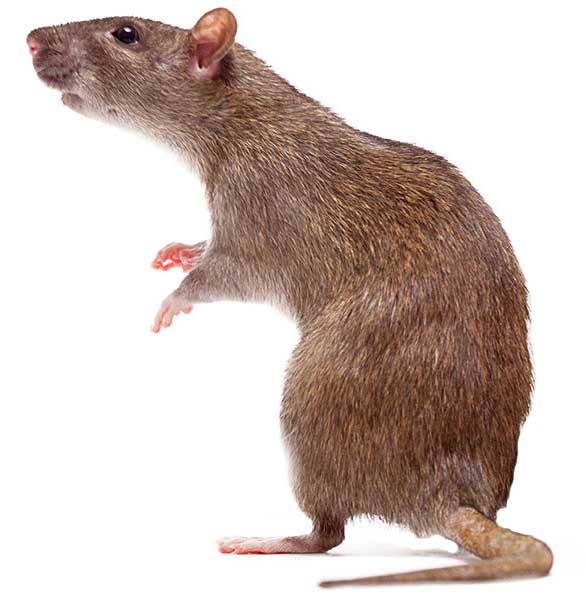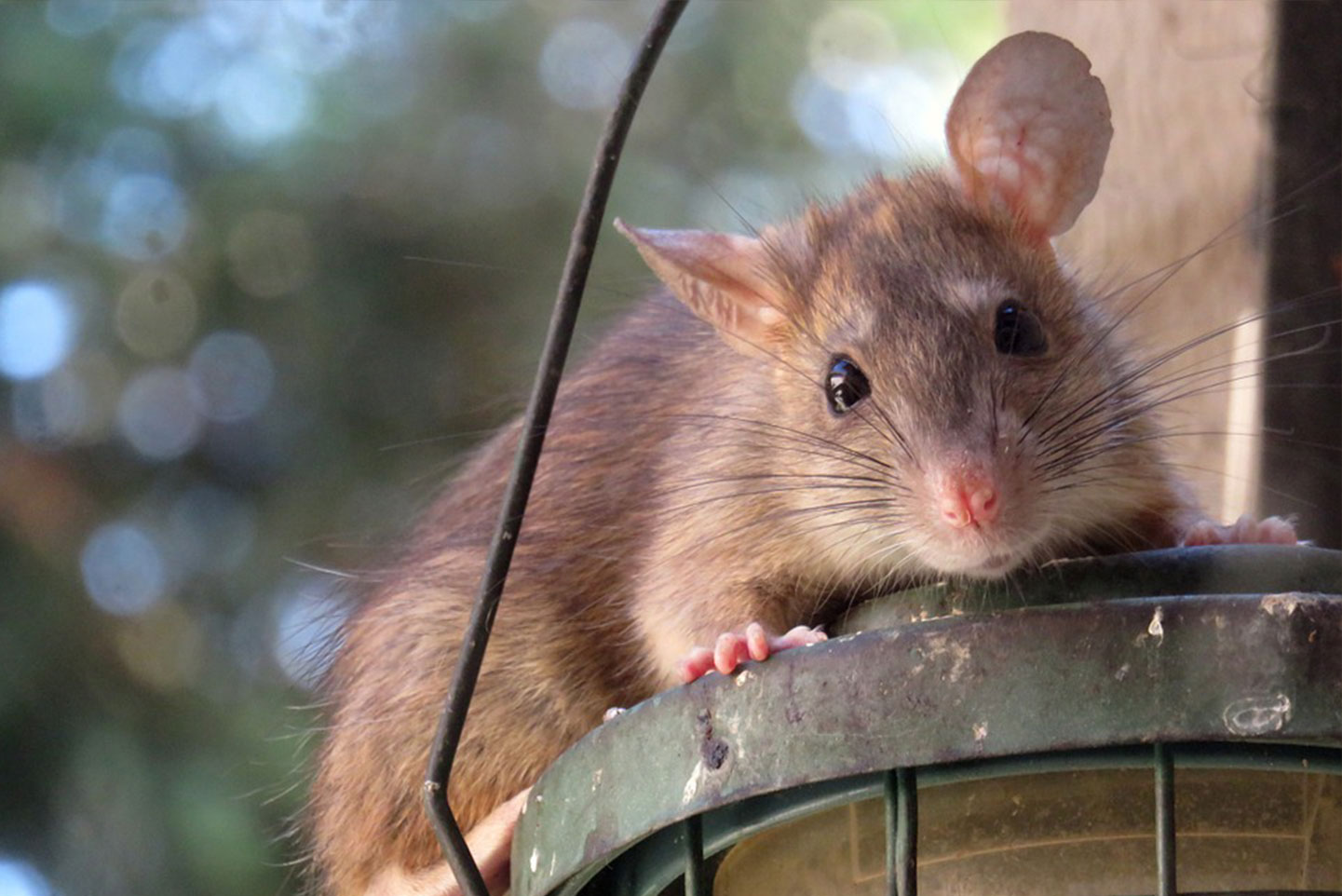(Rattus rattus)
Description
Roof rats have soft, smooth fur that is typically light to dark brown in color with black mixed in. They tend to have a lighter underside. They are roughly 16 inches only, with half of that size their body and the other half their tail. They are long and thin with a scaly tail and large ears and eyes. They also have a pointed nose, compared to Norway rats, which have a more rounded muzzle. Roof rats weigh 5 to 9 ounces.

Additional Information
Habits & Behavior

Roof rats are fearless climbers that can survive a fall of up to 50 feet. They have pads on their feet to facilitate better climbing of narrow vines and limbs. Their tails also assist to balance when climbing high up off the ground.
Roof rats like being up high and will live in tree canopies and climbing vines. Roof rats are nocturnal and generally begin searching for food shortly after sunset. They will use trees, utility lines, and fences to gain access to attics and overhead garage storage. They will also hide out in bushes and woodpiles.
The population density of roof rats and their range of travel is determined by the amount of available food in the area. They tend to stay in areas where there is a lot of food. They normally forage in a 100 to 200 foot radius.
Food
Rats require about an ounce of water per day. Roof rats are omnivores, so they will eat practically anything available to them. They eat both plants and animals, but their favorite foods are seeds, nuts, fruits, and berries. They also favor pet food. A roof rat can do very well consuming dog or cat food and can eat about half a pound a week.
They will also eat pet feces, birdseed, meat, and grease. Roof rats also feed on insects and bugs such as cockroaches, slugs, and snails. They are very adaptable. If they live near bodies of water, they will eat fish and shellfish. Roof rats are food hoarders, and they have been known to stash supplies of food items such as nuts and seeds.
Reproduction
The roof rat matures sexually at about 3 to 5 months. Females can have up to five litters a year, with litters ranging from 6 to 12 babies, although eight is the average.
The gestation period lasts from 21 to 29 days. The babies open their eyes after 15 days and are weaned by the fourth week. Roof rats live for approximately a year.
Signs
There are many signs that you may have a roof rat infestation in your home. The most obvious sign is seeing an actual rodent, dead or alive, in the home. Some other signs include:
- Droppings. Fresh roof rat droppings are soft and moist, whereas old droppings are hard and dried. The droppings usually measure about ¾ inch in length with blunt ends. Mice can produce around 50 droppings per day. You may find them in kitchen cabinets or pantries, as well as under sinks, along baseboards, and on top of wall beams.
- Gnaw marks. Rodents like to chew and they will chew through almost any type of material, including lead pipes, to obtain food or water. Look for gnaw marks around the various areas of your home.
- Rub marks and tracks. Rats tend to leave dark grease or dirt marks along walls and floorboards. These rub marks are caused by the rat’s oily fur, so be on the lookout.
- Nests. Roof rats like to nest in dark, secluded areas. They will build their nests out of shredded paper, cotton, packing materials, fabric, and wall insulation.
- Strange noises. If you hear strange noises in the walls, especially at night, it’s likely that you have one or more rodents in your home. Roof rats are likely to be found in attics and other places high up in the home, hence their name. If you hear squeaks and rustling, you likely have an infestation on your hands.
Dangers
Roof rats are nasty creatures that can pose a lot of dangers to humans such as the following:
- Disease transmission. Roof rats carry various diseases, which they can transmit to humans and pets primarily through their urine and feces. They can bite humans as well, but that is not common. Some of the diseases associated with roof rats include hantavirus, leptospirosis, rat-bite fever, and salmonellosis.
- Contamination. Roof rats can contaminate food, water, and living areas with their urine, feces, and fur. This can lead to foodborne illnesses and unsanitary living conditions.
- Property damage. Roof rats are known for their gnawing and chewing behavior. They can damage furniture as well as electrical wiring, insulation, wood, and other structural components of homes. This can lead to fires or expensive repairs.
- Chewing hazards. The constant gnawing behavior of roof rats can lead to potential hazards, like exposed electrical wiring or plumbing, which can result in costly repairs.
Having a roof rat Infestation can also be very stressful. Homeowners may suffer from psychological stress and anxiety due to the fear of disease transmission, property damage, and the overall discomfort of having rodents in close proximity.
Contact Us Today
Mice and rats are not cute creatures. If you have them in your home, you should get rid of them promptly to prevent damage, contamination, and the spread of diseases.
Stride Pest Control can help keep rodents, insects, and other pests at bay. Schedule a free consultation today by calling (512) 777-1339 (Austin) or (210) 547-8410 (San Antonio) or filling out the online form.
YOung produced by females every 21 days
6-12
Average Female Litters Per Year
4-6
Cost of damage caused by rats each year in U.S.
$20 B
Average Length Rats teeth grow each year
5.5″
Get a FREE Consultation


